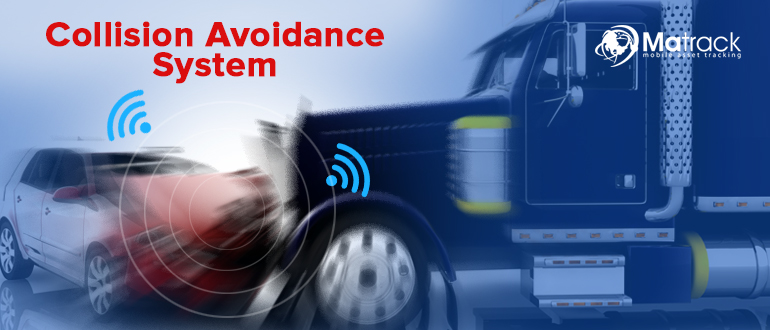Key Takeaways:
- Collision Avoidance Systems (CAS) use sensors, cameras, and radar to detect dangers and help prevent accidents by warning drivers or automatically taking actions like braking or steering.
- Key features like Automatic Emergency Braking, Blind Spot Detection, and Lane Keeping Assist make driving safer by reducing human errors.
- CAS saves money by lowering accident costs, insurance premiums, and repair expenses while making drivers feel more confident on the road.
- With future upgrades like AI and vehicle-to-vehicle communication, CAS will become faster, smarter, and play a big role in safer driving and self-driving cars.
What is a Collision Avoidance System?
Collision Avoidance System (CAS) is a cutting-edge safety technology designed to protect drivers, passengers, and pedestrians.
These systems utilize sensors, cameras, and radar to continuously monitor a vehicle’s surroundings, identifying potential dangers such as other vehicles, pedestrians, or obstacles. When the system finds a threat, it warns the driver. Often, it also acts to prevent or reduce the impact of a crash.
How Does a Collision Avoidance System (CAS) Work?
Detection
Sensors, cameras, radar, or LiDAR constantly monitor the area around the vehicle to spot obstacles, vehicles, or pedestrians.
Assessment
Assessment system calculates the likelihood of a collision by analyzing speed, distance, and movement.
Alert
If there’s a risk, the system warns the driver using sounds, lights, or vibrations.
Intervention
If the driver doesn’t act, the system steps in with:
- Braking
- Steering
- Throttle Control
Types of Collision Avoidance Systems
Forward Collision Warning (FCW)
Forward Collision Warning systems use sensors or cameras to spot possible collisions. They can detect vehicles, pedestrians, or objects in the way. These systems issue visual, auditory, or haptic alerts, encouraging drivers to act promptly and avoid accidents.
Automatic Emergency Braking (AEB)
Automatic Emergency Braking improves safety by applying the brakes on its own. This happens if the driver does not respond to collision warnings. Many variants of this system can also detect pedestrians and cyclists, making it particularly effective in urban areas.
Blind Spot Detection (BSD)
Blind Spot Detection systems monitor the vehicle’s blind spots with radar or ultrasonic sensors. When another vehicle is nearby, the system alerts the driver, reducing the risks associated with lane changes. Advanced versions may even intervene to prevent unintended lane shifts.
Lane Departure Warning (LDW)
Lane Departure Warning systems monitor road markings to detect when a vehicle drifts out of its lane without signaling. The system alerts the driver, helping to reduce accidents caused by distractions or fatigue.
Lane Keeping Assist (LKA)
Lane Keeping Assist improves on Lane Departure Warning. It gives gentle steering corrections to keep the vehicle centered in its lane. This feature is particularly beneficial during highway driving.
Rear Cross-Traffic Alert (RCTA)
When reversing, Rear Cross-Traffic Alert detects vehicles approaching from the sides and issues warnings to prevent collisions. Some systems can even apply the brakes if necessary.
Adaptive Cruise Control (ACC)
Adaptive Cruise Control improves regular cruise control. It automatically changes the vehicle’s speed to keep a safe distance behind other cars. This feature is especially useful for navigating heavy traffic or long journeys.
Parking Assistance
Parking Assistance makes parking easier with cameras and sensors. It includes features like rear parking sensors and 360-degree camera views. Some systems can even park the vehicle on their own. You can learn more about 360 dash cams
Intersection Assistance
Intersection Assistance monitors cross-traffic at intersections, warning the driver about potential hazards. Advanced systems can apply the brakes to avoid collisions with other vehicles or pedestrians.
Collision Avoidance Systems for Heavy Vehicles
Collision Avoidance Systems for heavy vehicles address the special challenges of larger vehicles. These challenges include longer braking distances and large blind spots. These systems include advanced braking, pedestrian detection, and proximity sensors, ensuring enhanced safety in a variety of driving environments.
Related Topic: Do CSA Scores Matter?
Benefits of Collision Avoidance Systems
Enhanced Safety
CAS aims to prevent accidents by finding hazards early and reacting quickly. Features like automatic emergency braking and lane-keeping assist help protect drivers, passengers, pedestrians, and cyclists.
Fewer Driver Mistakes
Human error is a leading cause of accidents, and CAS acts as a safety net. It helps when distracted, tired drivers misjudge a situation. This reduces the chances of crashes and makes driving safer.
Lower Costs from Accidents
By avoiding crashes or minimizing their impact, CAS helps save money. Repair bills, medical expenses, and insurance premiums can add. The financial benefits are important for both drivers and businesses.
More Confident Driving
Driving can be stressful, especially in heavy traffic, bad weather, or unfamiliar areas. CAS provides real-time support. This helps drivers feel confident and focus on the road. They don’t have to worry about potential risks.
Building Blocks for Self-Driving Cars
CAS is an important technology for autonomous vehicles. It can detect and respond to dangers. This ability helps make self-driving systems safer and more reliable.
Increased Vehicle Appeal
Vehicles equipped with CAS often meet high safety standards, which makes them more desirable for buyers. For fleet operators, these systems can also mean better compliance with regulations and a stronger market value.
Eco-Friendly Benefits
Some CAS features, like adaptive cruise control, promote smoother driving patterns. This can help save fuel and cut emissions. This makes the system safer and better for the environment.
The Future of Collision Avoidance Systems
Collision Avoidance Systems are set to become much smarter and more connected in the coming years. With advancements like AI, better sensors, and vehicle-to-vehicle (V2V) communication, these systems can react faster to dangers. They will handle tough situations like bad weather or busy traffic with greater precision, making driving even safer.
As safety rules continue to evolve, these systems will likely become standard in all vehicles, not just luxury models. This widespread adoption will mean fewer accidents, more lives saved, and a smoother transition toward self-driving cars. The future of CAS is bright and promises to make roads safer for everyone.
Conclusion
Collision Avoidance Systems (CAS) are a big step forward in vehicle safety. They help prevent accidents by spotting and reacting to possible dangers on the road. With features like Automatic Emergency Braking, Blind Spot Detection, and Lane Keeping Assist, these systems help reduce risks. They address human error and difficult driving conditions, making travel safer for everyone.
As the technology advances, CAS will play an even greater role in reducing accidents and improving road safety. Enhanced precision, stronger connectivity, and growing regulatory requirements will drive its adoption across all types of vehicles. This wide implementation helps create smarter and safer transportation. It also prepares us for the shift to fully autonomous vehicles.




